This is The Typewriter Repairmen's page for the 2024 National Underwater Robotics Challenge, a competition put on by Si Se Puede in Tempe, AZ.
The Typewriter Repairmen is a family robotics club. Jim, the Principal Instigator, is a "retired" mechanical engineer. He has worked with the local FIRST high school robotics team NERDS for the past 18 seasons as an engineering mentor, and discovered that it's about the most fun thing there is. Janet, his wife, is a retired engineer. Jim's brother David is an Electrical Engineer at the University of Arizona's Steward Observatory, and also runs a side business Cathode Corner, which sells neat electronic gadgets.
Link to the 2009 NURC robot notBob
Link to the 2010 NURC robot Babs
Link to the 2012 NURC autonomous robot Biff
All through the project we have been posting videos on youtube.
Contact us at jforb427@gmail.com
June 9, 2024
Jim, Linus, and Carol visited David today. David spent more time working on the programming for the temperature sensor, and got it working. It only displays after pushing a button on the game pad, as he could not get the interrupts to work without causing glitches with other parts of the code. But it will do the job.
We finished assembling the modified gripper, and tested it. It broke. David made a different finger design, and then it broke. We will probably make new finger pieces from polycarbonate to replace the fragile acryli parts. But we might also decide to not use the gripper, and just use the stick.
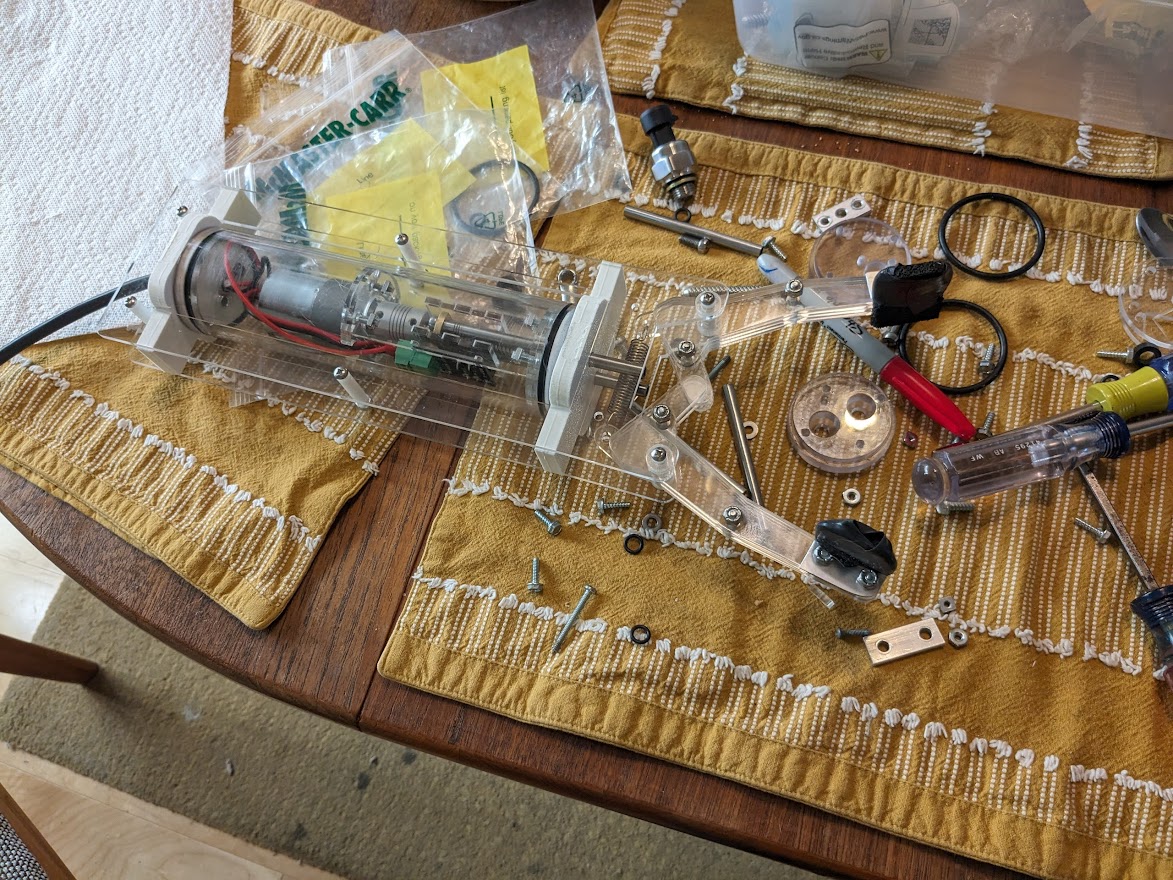
While Linuse was test driving, we blew a fuse. After some more testing and discussion, we decided to place a 25 amp fuse on the ROV itself, and a 20 amp fuse in the battery bag. We determined that with the maximum power on the thrusters set to 50%, we could get up to 18 amps current draw from the batteries.
We finished and submitted the tech report.
June 1, 2024
David and Linus visited today. We experimented with the analog temperature sensor, and discovered it reacted really slowly, and we only get 15 seconds to read the vent temperature. So Jim installed the serial sensor, which is a DS19B20 based device. David spent a while working on the programming for it, and did get it to display temperatures on the IDE, but it's presence in the program for the bottom Teensy crashed the program, so he commented it out and decided to work on it later.
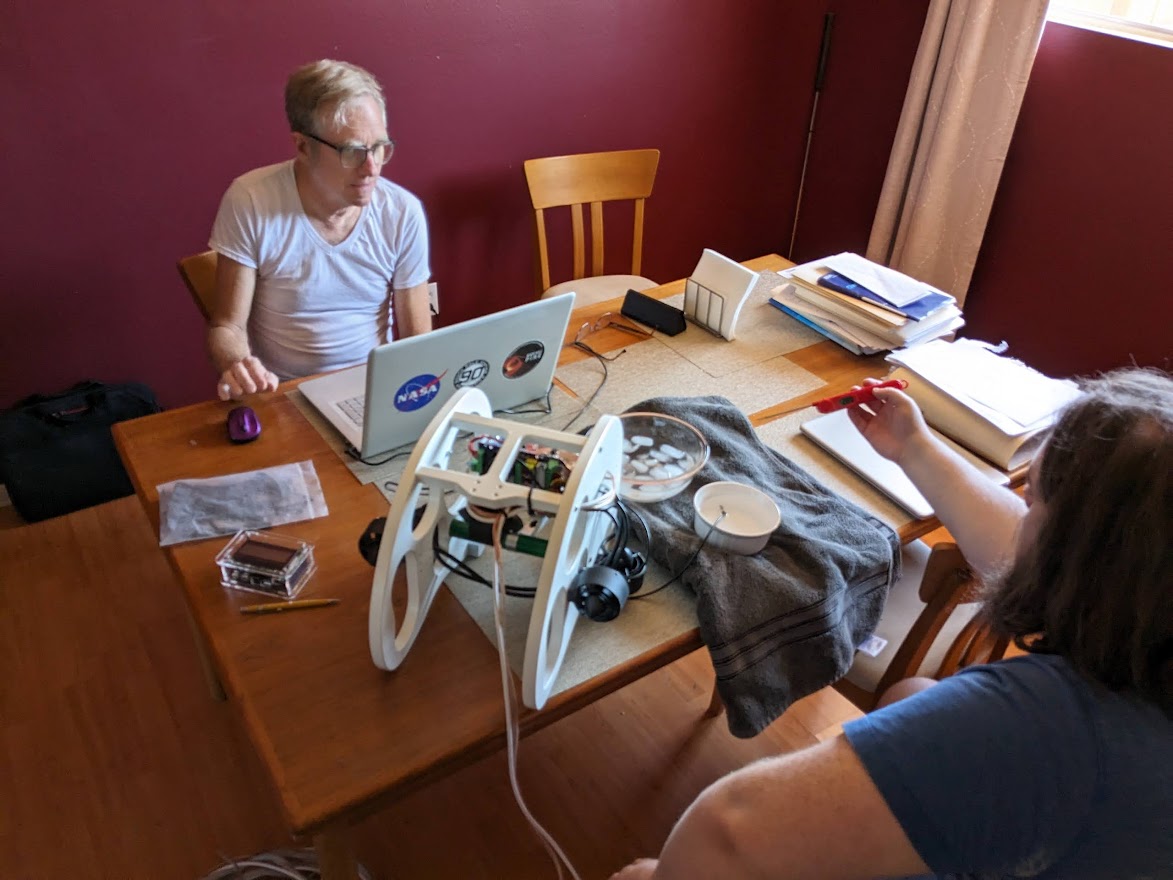
Linus and Jim worked on a new design for the end of the stick (the manipulator?) and build it and riveted it in place. Linus spent a while driving the ROV and fetching things in the pool, and decided there needed to be some design changes. So Jim made another one, and Linus used it for a while and found it worked better.

David and Linus took the robot home with them, to do more work on it. David is filling his small pool, so they will be able to test it in Tucson.
Jim put the beginnings of the tech report on a shared google docs. We all need to work on it this week and finish it.
May 31, 2024
Back to playing with the ROV. Jim added some black tape to the plastic divider between LED and camera, and will see how it works tonight when it gets dark. He also got a couple temperature probes, one is digital, one is analog. He installed the analog one, and it's reading what looks like might be close to correct temperature of the water in the pool. But more testing is needed.
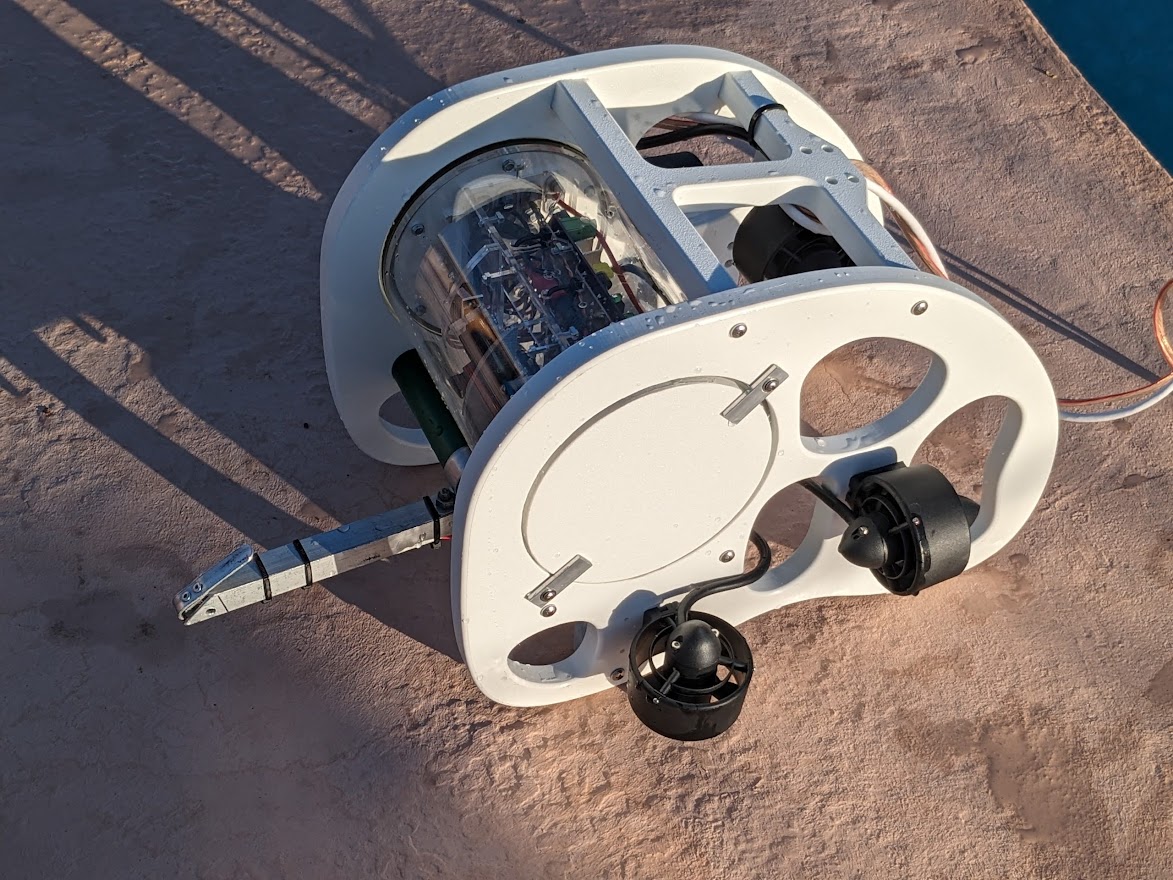
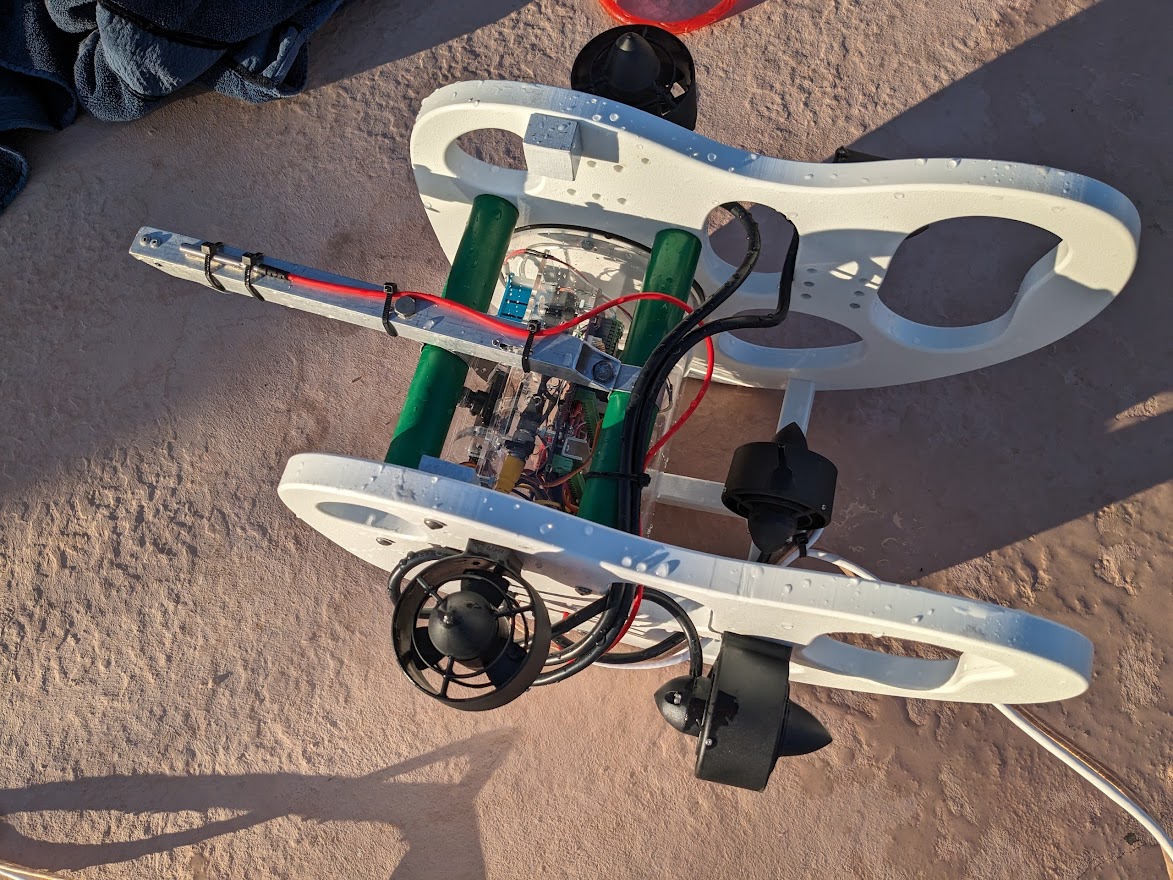
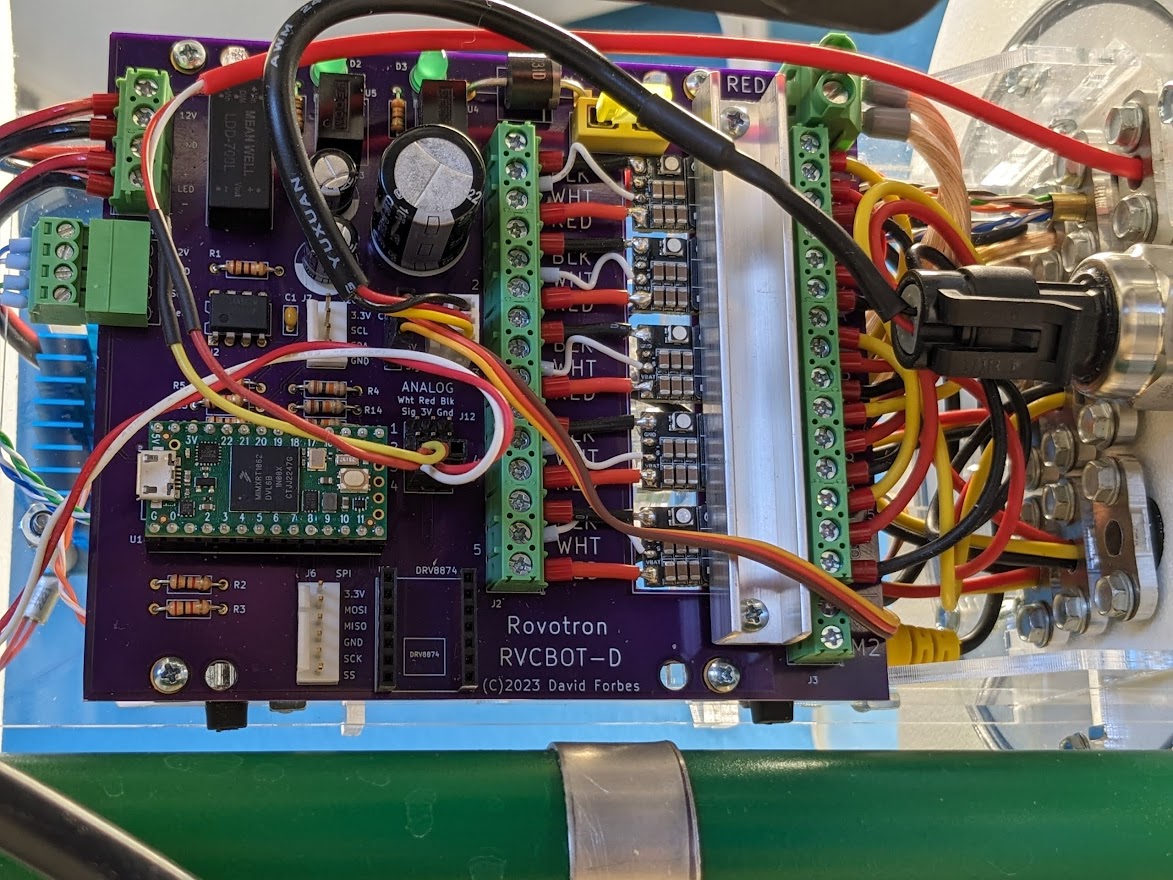

May 22, 2024
We've been on vacations, so things are moving slowly. Jim got some dive rings, and spent a little while practicing getting them from the bottom of the pool. He also ordered a temperature sensor, but the wrong one was shipped, so he ordered a different one and is wating for it. He got a robotic fishing lure, the type to be used in the competition, to play with, along with a net and some fishing line. The plan is to attach the fish to the line with velcro, the other end of the line to a weight, put it in the pool, and see if he can catch it with the net attached to the ROV.
Jim and Janet continued reviewing the rules and mission. The most difficult tasks appear to be the distance measurement, and putting the control rods into the box. We're still thinking about measuring, and have not figured it out yet.
May 8, 2024
Jim got the stick back from David, and installed it. After it got kind of dark, practiced flying. A couple minor issues are that there is glare from the LED appearing in the video image, and the depth reading on the display fluctuates very rapidly. David said he'll work on the code to slow down the refresh, and Jim will add some black tape or something to the plastic inside the ROV noggin to reduce the glare.
Jim also bought a tool bag, it has a hard bottom inside, and holds the two 18Ah batteries, as well as the control system and video adapters for the display. So this is the entire ROV system:
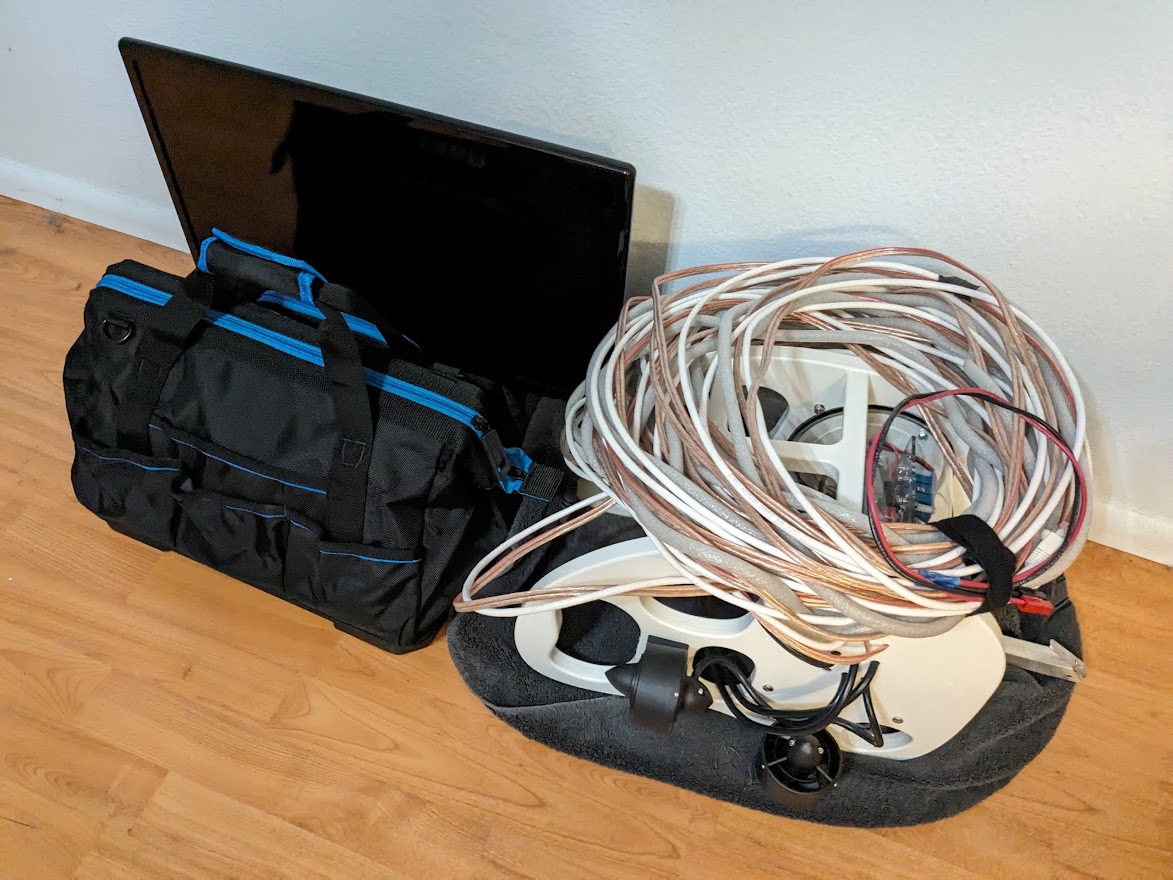
Jim also started reviewing the rules and mission again. He'll try to talk Janet into doing some mission analysis.
May 7, 2024
It's once again time to get ready for NURC! We've been working hard, but not really for our team. We've been developing the new NURC Kit ROV, "Cadet". This is a collaboration with Cathode Corner, The Typewriter Repairmen, and Si Se Puede Foundation. The Typewriter Repairmen did most of the design concept, Cathode Corner did the detailed design and electronics enclosure fabrication, and Si Se Puede is fabricating the larger parts and handling sales of the kit.
The Cadet is a new design, that uses lots of ideas from our previous ROVs, but with many newer parts that are commercially available. We designed it to be capable, inexpensive, be fun to look at, and fun to pilot.
Now that the kits are available for all teams to purchase, we can get to work figuring out how to play this year's challenge, Cavern Chaos. We also need to figure out who on our team is going to be doing what. Since Jim has a swimming pool and lots of free time, he is going to try to get better at piloting, although it's likely that Linus will again be our primary pilot, as he has the most skilz.
We need to analyze the game, and figure out what tasks the ROV will need to perform. The basic Cadet has no ability to manipulate anything, although it can move well and observe. We plan to carefully read through the mission, and see what is required. In the past we have used a gripper, and also a passive "stick" that has a hook on the end. If the stick will work to accomplish most of the tasks, then that's what we'd like to use, as it is simple to make and operate. If gripping is needed, we will refine the gripper assembly that David has prototyped.
Another thing we need to do is figure out how to package all the stuff that goes with the ROV to make it work. There isn't very much, just two batteries, a small control box, a game pad, and a TV monitor.
This is one idea how to store everything. This old Haliburton case was used on the Spare Parts movie set as a prop for the Virgina Tech team. We think all the stuff we need will fit in it, but it will be rather heavy. We're also considering a backpack or other soft bag, or possibly converting a toolbox like we've done in the past.
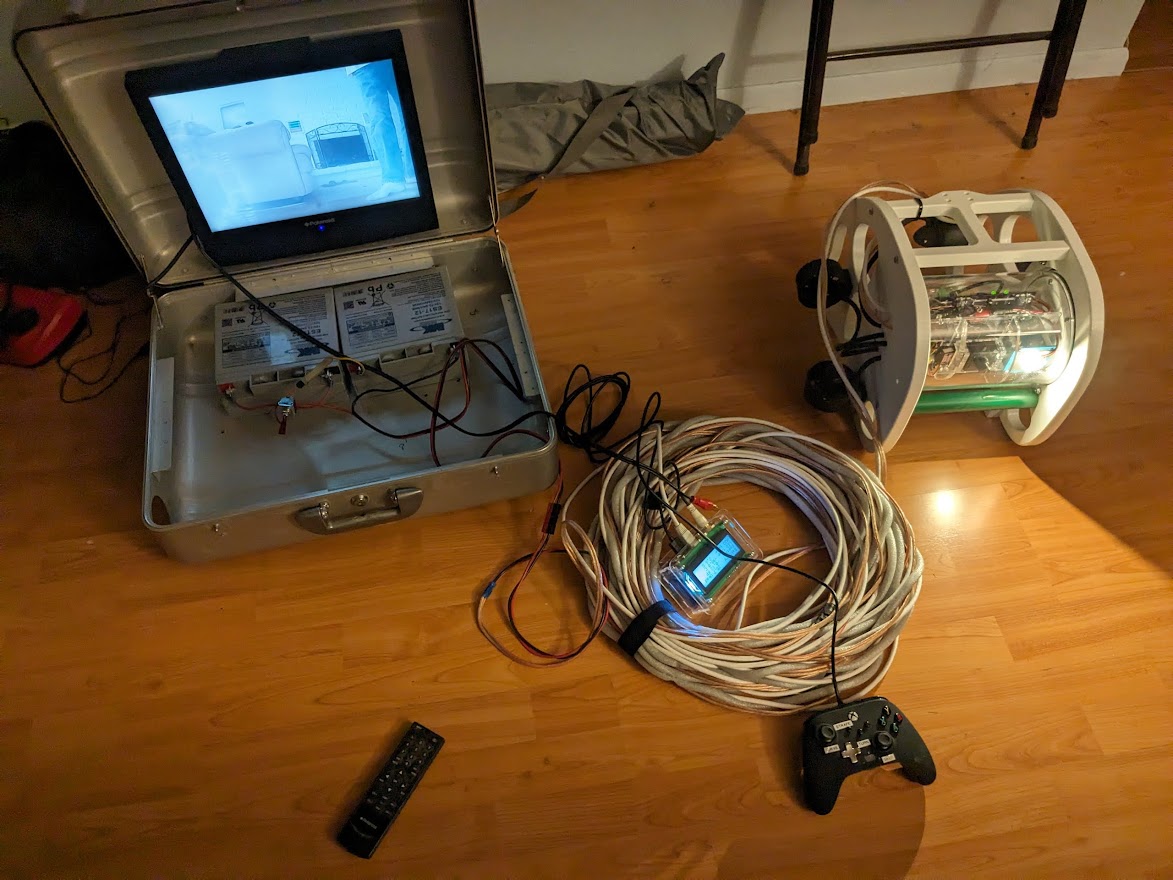
Copyright 2009-2024 Jim Forbes, David Forbes